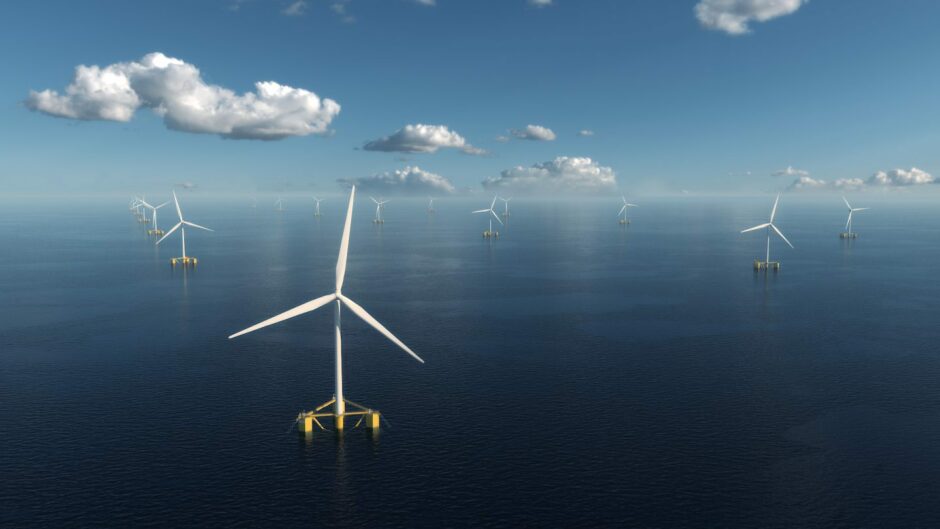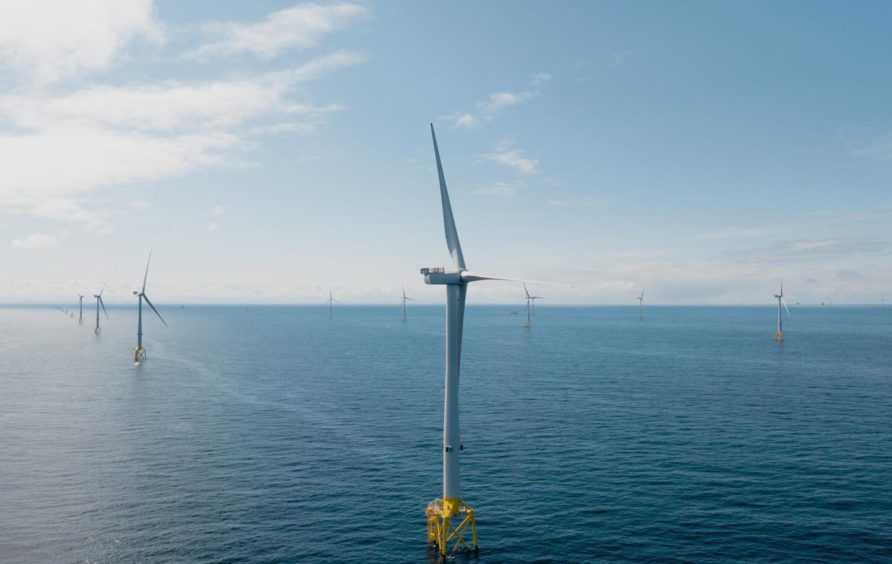
More ScotWind projects are to be offered seabed agreements off Shetland as part of Crown Estate Scotland’s clearing process.
Ocean Winds, Mainstream Renewables Power and ESB Asset Development have all been successful in their bids to build developments in the Northern North Sea.
Despite more than 70 tenders being lodged in ScotWind, no projects were selected for the ‘NE1’ area, located off the east coast of Shetland.
It sparked concerns that a lack of offshore wind power could hamper the islands’ lofty energy transition ambitions.
But through the clearing process – which was open to applicants who met the required standards but did not secure their chosen location first time around – three projects have been given the go ahead to progress.
2.8GW and £56m
Taken together, the offshore wind farms will add a further 2.8 gigawatts (GW) to the 24.8 GW announced by Crown Estate Scotland in January.
A further £56 million in option fees will also be paid into the public purse.
The announcement of the clearing round results coincides with Aberdeen hosting an offshore wind supply chain summit today.
Scotland’s net zero and energy secretary, Michael Matheson will chair the event, while First Minister Nicola Sturgeon is also in the Granite City to deliver the keynote address.
Ms Sturgeon said: “ScotWind will deliver a new era in Scotland’s offshore wind industry, representing the world’s largest commercial round for floating offshore wind and breaks new ground in putting large-scale floating wind technology on the map at Gigawatt scale. It will provide several billion pounds more in rental revenues once projects become operational, to be invested for the benefit of the people of Scotland.
“The importance of accelerating the transition to renewable energy sources, including hydrogen, has been brought into sharp relief by Russia’s illegal invasion of Ukraine and the cost of living crisis. In Scotland, nearly 100% of our net electricity demand already comes from renewable sources and we are focused on reducing energy demand and accelerating the deployment of renewable energy.
“The Scottish Government sees offshore wind – and the hydrogen production which we hope will be enabled by offshore wind – as one of the most important economic and environmental opportunities we have. It can reduce our carbon emissions, improve our energy security, and create tens of thousands of high quality jobs. It will bring benefits for all of Scotland – but it will be especially important in the north east, and a crucial part in the transition from being the oil and gas capital of Europe, to being one of the net zero capitals of Europe.”
A potential £1.2bn for supply chain
A total of 14 applications to build wind farms in NE1 were lodged by companies that were unsuccessful in the original process.
Initial supply chain commitments for the three projects that were picked indicate an average of £1.2 billion investment in Scotland per gigawatt (GW) of capacity built.
Given the deep waters that surround Shetland, all of the wind farms will be floating.
Ocean Winds, the company behind the Moray West and Moray East schemes off the north-east coast, and ESB both paid £10m in option fees, with both companies planning to build a 500 megawatt (MW) development.
Meanwhile, Mainstream forked out £36m for a 1.8 GW project.
Together, the schemes will cover just over 560km2 of seabed, around three quarters of the space that was available in NE1.
Mainstream and Ocean Winds have teamed up for their Shetland ScotWind developments, with each company taking on the role of lead applicant for one of the projects.
Mary Quaney, Mainstream’s chief executive, said: “This is a very significant win for Mainstream which plays to our key strengths as a global leader in floating offshore wind technology as well as our track record in offshore wind project development. In Scotland we have already developed the 450MW Neart na Gaoithe Offshore Wind Farm and we now look forward to working with all stakeholders to further develop and strengthen Scotland’s offshore wind industry and help position it a global leader in floating offshore wind power.”
More success for Ocean Winds
Ocean Winds, a 50-50 joint venture between EDP Renewables and Engie, was also successful in the original ScotWind round.
It paid £42m to secure land for a 1 GW fixed-bottom wind farm, though it bid for five sites in total, three of which were in partnership with Aker Offshore Wind.
Commenting on the partnership, Bautista Rodriguez, Ocean Winds’ CEO, said: “We are proud of the strength that Ocean Winds and Mainstream Renewable Power teams have combined to secure this major new project. As Ocean Winds, we are looking forward to using our more than 10-year expertise as pioneer in floating offshore wind farms from development to operation to progress this large floating project awarded with Mainstream, as well as the 500 MW floating project also awarded to Ocean Winds during this clearing round. Both will bring major benefits to Shetland and Scotland, and an important contribution to Net Zero.”
The start of a long process
Once agreements are officially signed later this year, more information on supply chain commitments will be published.
In order to get turbines in the sea, the projects will have to cross numerous hurdles and progress through consenting, financing, and planning stages.
Colin Palmer, director of marine at Crown Estate Scotland, said: “This is a fantastic result for Shetland and for Scotland. These projects have significant potential to really boost Scotland’s progress towards its net zero targets, including in relation to the opportunity around green hydrogen.
“Taking these three into account, the 20 ScotWind projects now total up to 27.6GW with initial supply chain commitments indicating an average of £1.4bn investment in Scotland per gigawatt of capacity built.
“This result is further proof that Scotland is leading globally on offshore wind, deploying new technology and exploiting the potential of hydrogen.”
Recommended for you


 © Supplied by Crown Estate Scotlan
© Supplied by Crown Estate Scotlan © PA
© PA © Supplied by Brett Currie Photo/Video - https://www.brettcurrie.com/
© Supplied by Brett Currie Photo/Video - https://www.brettcurrie.com/